Catocala lineella
Catocala lineella
kah-TOCK-uh-lahmlye-nee-EL-lah
Grote, 1872
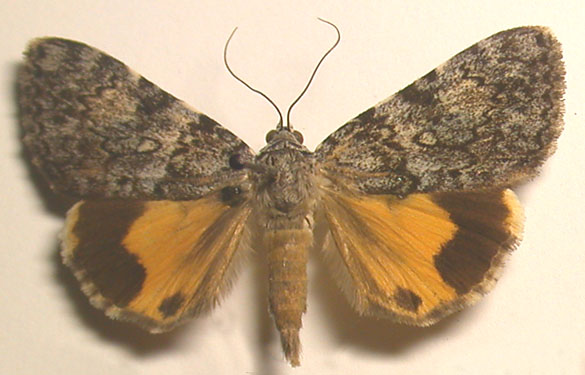
Catocala lineella male, Longueuil, Quebec,
July 22, 1994, courtesy of Pierre Legault.
This site has been created by
Bill Oehlke.
Comments, suggestions and/or additional information are welcomed by Bill.
| TAXONOMY:
Superfamily: Noctuoidea
Family: Erebidae, Leach, [1815]
Subfamily: Erebinae, Leach, [1815]
Tribe: Catocalini, Boisduval, [1828]
Genus: Catocala, Schrank, 1802
|
DISTRIBUTION: Catocala lineella, the Little Lined
underwing, Hodges# 8878.1, (wingspan: 35-40mm) flies from Ontario and
Quebec south to
Florida west to Texas and north to
Ohio.
It has also been reported in
Alabama,
Arkansas,
Connecticut,
Delaware,
Georgia,
Illinois,
Indiana,
Kansas,
Kentucky,
Louisiana,
Maine,
Maryland,
Massachusetts,
Michigan,
Minnesota,
Mississippi,
Missouri,
Nebraska ,
New Hampshire,
New Jersey,
New York,
North Carolina,
Oklahoma,
Pennsylvania,
Rhode Island,
South Carolina,
Vermont,
Virginia,
West Virginia and
Wisconsin.
Catocala lineella is now (2010) given full species status.
Moths come in to lights and to bait.
Catocala lineella
courtesy of James K. Adams. |
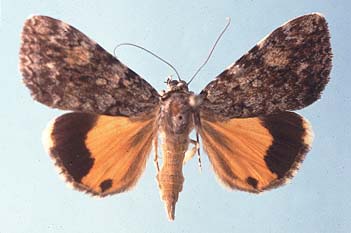 |
Like C. amica, this species does not have a marginal black band
on the hindwing. The forewing subreniform spot is pale and boldy
outlined with black. There is a similar light brownish-gray patch in
the upper half of the median area near the pm line, and just between
the subreniform spot and the antemedian line there is a similarly
coloured light patch paralleling the am lne.
The reniform spot is dark,
less distinct and in a generally darker area.
Catocala lineella, Peterborough, Ontario,
July 25, 2006.
|
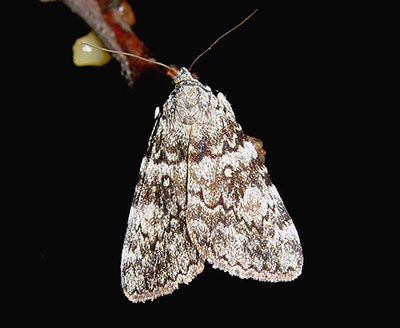
|
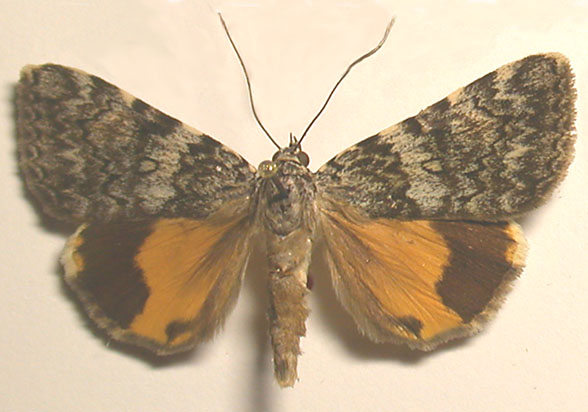
Catocala lineella male, Longueuil, Quebec,
July 22, 1994, courtesy of Pierre Legault.
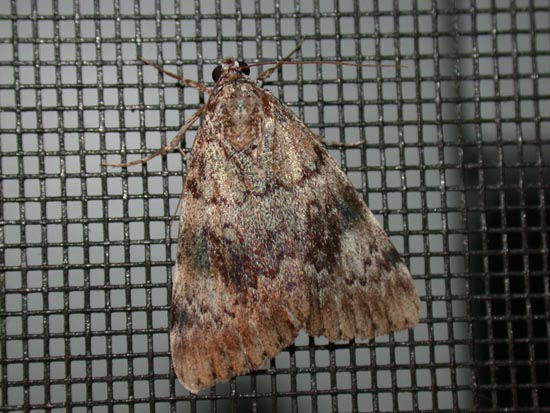
Catocala lineella form "curvifascia", Brower,1936,
courtesy of Hugh McGuinness, Sag Harbor, New York, September 13,
2002
The form "curvifascia" has a diffuse black-brown arc from the mid costa
region toward the mid outer margin.
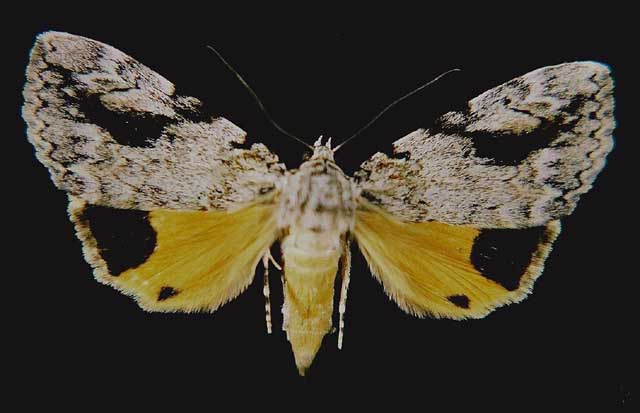
Catocala lineella form "curvifascia", courtesy of Ron
Nelson.
FLIGHT TIMES AND PREFERRED FOOD PLANTS:
Catocala amica lineella are usually on the wing
from June until September.
Tim Dyson sends this nice ventral shot from
Peterborough, Ontario,
July 25, 2006, of a male feeding on fresh banana-beer mush. It
took some time to entice the moth to land on and feed from the
offering on the stick.
The Catocala amica lineella caterpillar shows a preference for oak
species and probably limits itself to members of the Quercus
genus. |
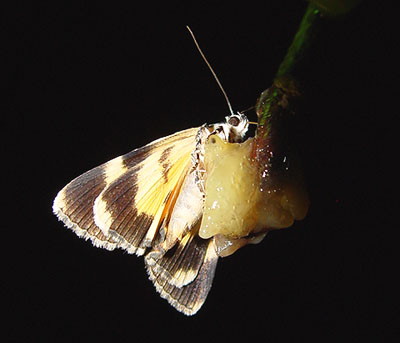 |
ECLOSION:
Adults eclose from pupae at soil surface.
Visit Catocala lineella, Athol, Worcester County, Massachusetts, July 27, 2012; Aug. 4; Sept. 5, 2011, Dave Small.
Visit Catocala lineella, Pickens County, Georgia, August 22, 2009, Aubrey Scott.
Visit Catocala lineella, Ware, Hampshire County, Massachusetts, August 26, 2016, Martha Klassanos.
SCENTING AND MATING:
Catocala lineella females
emit an airbourne pheromone and males use their antennae to track the
scent plume.
EGGS, CATERPILLARS, COCOONS AND PUPAE:
Eggs are deposited on
tree bark in the fall and hatch the following spring.
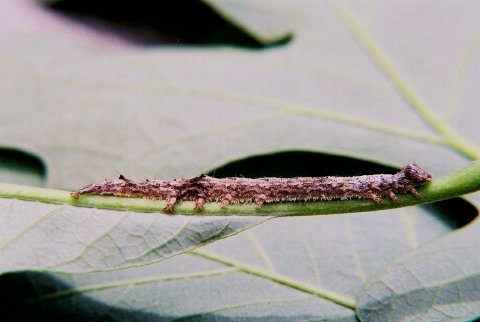
Catocala lineella form "curvifascia", courtesy of
Ron Nelson.
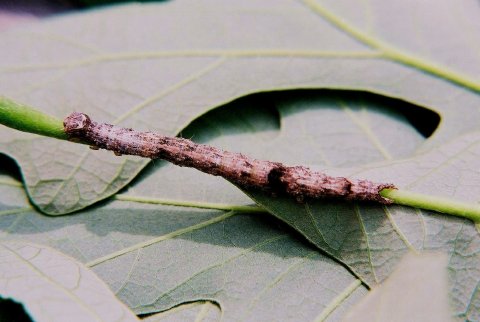
Catocala lineella form "curvifascia", courtesy of
Ron Nelson, Milwaukee.
Larval Food Plants
Listed below are primary food plant(s) and alternate food plants.
It is hoped that this alphabetical listing followed by the common
name of the foodplant will prove useful. The list is not exhaustive,
although some species seem very host specific.
Experimenting with closely related foodplants is worthwhile.
Quercus alba
Quercus bicolor
Quercus coccinea
Quercus ilicifolia
Quercus macrocarpa.......
Quercus prinoides
Quercus prinus
Quercus rubra
Quercus stellata
Quercus velutina
|
White oak
Swamp white oak
Scarlet oak
Bear oak
Bur oak
Dwarf chinkapin oak
Chestnut oak
Red oak
Post oak
Black oak
|
This page is brought to you by Bill Oehlke and the
WLSS. Pages are on space rented from Bizland. If you would like to become a "Patron of the Sphingidae/Catocala Sites",
contact Bill.
Please send sightings/images to Bill. I will do my best to respond to requests for identification help.
Enjoy one of nature's wonderments: Live Saturniidae (Giant Silkmoth) cocoons.

|

To show appreciation for this site, click on the flashing
butterfly to the left, a link
to many worldwide insect sites. |
Return to Canadian Index
Return to Main Index










